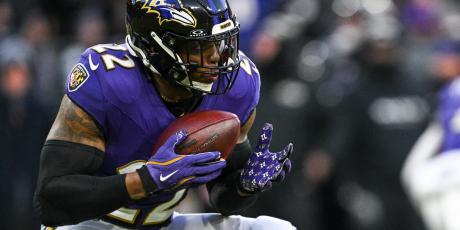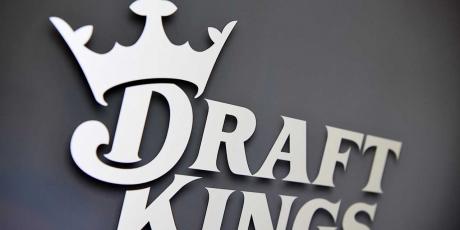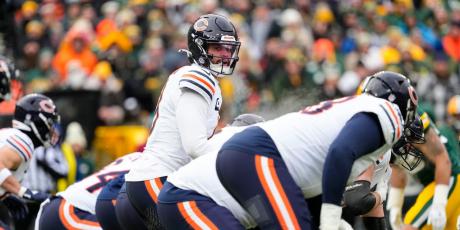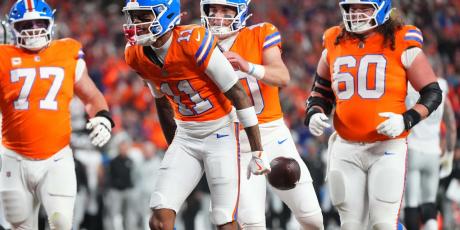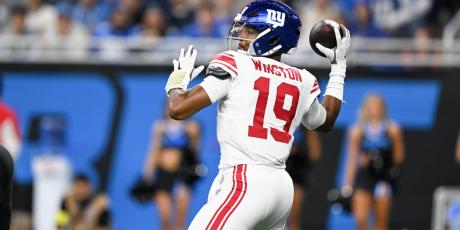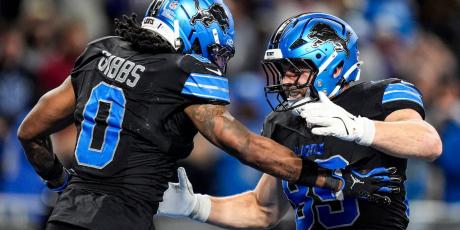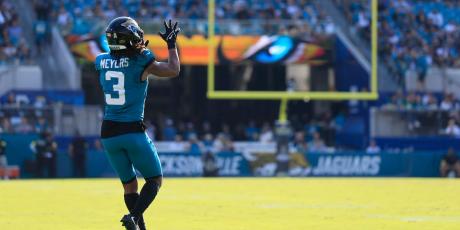Rushing Expectation: Thomas Rawls - Selfishly, I Want to Believe

As an undrafted, professional athlete myself (just in a different sport), I’ve always had a soft spot for players that work their way into an opportunity. My dynasty rosters are filled with the Arian Fosters of the world. For better or for worst, these are the players that I enjoy rooting for, because I’ve been in that position.
Arguably the best game of my professional career came in the East Coast Hockey League (ECHL) in front of 10,000-plus just 28 weeks before I am writing this. I scored a goal and had two assists in a come-from-behind victory against our biggest rival.
Before this comes off as some sort of humble brag, please just realize that my pro career ultimately amounted to coming up two steps short of the National Hockey League (NHL). Highlighting mediocrity like that would be extremely counterintuitive to my point, but I swear this is relevant. This story matters because I was a healthy scratch the very next game.
I believe the conversation with my coach went something like, “great game last weekend kid, but you won’t be in the lineup tonight.”
That was it.
I found out quickly that the New York Rangers sent down two players, which in turn caused two players from our AHL affiliate to trickle down to our team. Both were high NHL draft picks, and my coaches’ hands were completely tied. This kind of thing had a lot to do with me hanging up the skates for good recently.
You come to find out the reality of professional sports is that it’s not always the best players who get an opportunity. Anyone who tells you draft pedigree and contracts don’t matter is just wrong, though thankfully, some guys are lucky enough to beat the odds.
That brings us to today’s Rushing Expectation profile, Thomas Rawls.
Will Rawls Emerge From Seattle's Crowded Young Backfield?
Rawls was an undrafted player out of Central Michigan who ultimately earned a roster spot with the Seattle Seahawks when Robert Turbin was waived and Christine Michael was traded.
He started the season thriving as a change-of-pace back behind Marshawn Lynch. Rawls absolutely exploded onto the scene when Lynch left with a hamstring injury in Week 3 against the Bears. In the next three weeks, Rawls posted a 56-321-1 stat line on the ground.
Rawls was rewarded with one carry when Lynch returned in Week 6.
I’m sure the discussion with head coach Pete Carroll went something like, “great game last weekend kid, but Marshawn’s in the lineup tonight.”
Okay look, I’m not saying Rawls should have overtaken one of the best running backs this league has ever seen after three good weeks. The point is sometimes production and talent is almost completely irrelevant in professional sports.
After another Lynch injury five weeks later, Rawls was named the starter against the 49ers. He responded with 255 yards and two touchdowns on 33 touches.
After multiple impressive performances down the stretch, Rawls was put on season-ending IR after suffering a fractured ankle with ligament damage in which he later had surgery.
“Great season kid, but we’re going to be the first team since 2000 to draft three running backs and we are also re-signing Christine Michael.”
The Seahawks have always been a team driven by competition and this is a good thing. Risk diversification and general team depth is also a very good thing.
The level of success that Rawls enjoyed in his first NFL season should at least mean close to as much as draft pedigree. Right? Maybe I’m missing something.
Rushing Expectation
Attempts and Targets
Before we dig into the narratives surrounding the crowded backfield in Seattle, let's take a look at the Rushing Expectation from Rawls and see just how impressive he was, starting with attempts and targets:

Rawls has rare power paired with a compact running style and seems to get better as a game goes on and the more carries he receives.
His rushing distribution is unique compared to most runners I have charted. The majority of his runs came through the middle lane at 47.0%, but his next two highest-volume rushing lanes were actually behind the left tackle and right tackle, making up 41.7% of his total sample.
Most distributions are skewed heavily towards the middle lane, and either relatively evenly distributed in the rest, or skew toward outside runs.
Rawls rarely bounces runs completely outside, which makes perfect sense considering he is a sudden runner with decisive jump cuts as he approaches the line of scrimmage. At times he is a bit too reliant on these cutbacks rather than sticking to his original path. His running lane distribution is the highest through the left tackle and right tackle of any player in my sample. The next closest were C.J. Anderson (34.8%) and Charles Sims (33.4%).
Rawls's involvement in the passing game was heavily skewed towards targets in the flat and inside areas, making up 36.4% and 45.5% of his total targets, respectively. Rawls is adequate in the passing game, but has never exceeded 10 catches in college or in the NFL.
Expected Success Rate (eSR) is the signature metric of Rushing Expectation and highlights the fact that not every Success Rate (SR) is created equal. Offensive lines have a direct correlation with running back success and how far a player falls below or exceeds expectation is extremely relevant. If you are new to this series, you can learn more about this metric in my introduction video or article found here.
Success Rate vs. Expectation
Now that Lynch has retired, it would be great to see Rawls step up and take over his role as Seattle's bell cow. In addition to a high weekly ceiling, Rawls had a very solid floor in 2015 for a back that doesn’t catch many passes. This was largely based on his consistent efficiency. Rawls broke some big plays but his value was not reliant on them for fantasy production. We know Rawls has the functional power to be an every-down back and handle a starter's workload, but let’s see how much Rawls performed above expectation on a per-lane basis:

The overall eSR for Rawls and the Seahawks was 46.8% per rushing attempt, tied for second in the league with the Patriots. The Seahawks were equally impressive in pass protection, boasting the fourth-best overall expectation of any team at 45.3%.
Per attempt, Rawls was most successful behind the left end, though this was his second smallest sample at just 6.8%.
Through the middle, Rawls performed exceedingly well: above his team expected success rate by 14.3%, and 12.7% above league average. Rawls had the highest SR of any player in my sample through the middle. The next highest players were Ryan Mathews (58.6%) and David Johnson (57.5%).
Per target, Rawls finished above expectation in both the inside and outside areas of the field, though this success came in a very limited sample size. Of his 22.6 fantasy points (PPR), 10.1 came on one play to the outside, and his 100.0% success rate there came on a sample size of just two targets.
Rushing Expectation
It’s quite clear that even when taking into account great run blocking, Rawls’s efficiency numbers were immaculate. Let’s check out his overall Rushing Expectation results to see if there is something beneath the surface that can help explain his success.

Behind what was (contrary to popular belief) statistically a top-three run blocking offensive line according to FootballOutsiders' Adjusted Line Yards, Rawls performed above expectation in his 2015 sample by 11.5% in the run game, but had an extremely small sample size in the pass game.
Rawls’s rushing efficiency put him number-three overall in my entire 20-player sample in regards to percent above expectation on rush attempts.
If I have learned one thing, it is that as a community we understate the importance of yards before contact at the running back position. Elusiveness behind the line of scrimmage and the ability to find small creases is much more important than long speed.
Rawls finished third in my sample in regards to yards before contact at 6.8 yards per attempt, trailing just Ameer Abdullah (7.7 yards) and Tevin Coleman (6.9 yards). Rawls is a quick runner who plays with a low center of gravity and displays very good agility when accessing creases that may difficult for most good backs to hit. He consistently displays above average burst in his acceleration through these creases and seems to get better as the game goes on.
Rawls finished a full 0.5 yards after contact more per carry than the average in my sample, which was in the top-25 percentile. He is an elite finisher and shows balance through contact, which is most likely attributed to his violent running style and power that greatly exceeds his size. Rawls is the kind of player that is looking to send a message on every play, running over anyone in his path and absorbing contact from various angles with low pad level. Rawls relies heavily on jump cuts in which he plants hard and gets downhill in a hurry.
The biggest problem I see on film with Rawls is his below average mental processing skills. His vision to find lanes and small creases is above average, but his football IQ seems merely adequate and he needs to refine his judgment. Rawls is an intriguing talent, but he takes a lot of chances and tries to make unnecessary cutbacks on plays, which oftentimes is counterproductive.
Rawls faced eight or more in the box on the fifth-lowest percentage of total runs of my 20-player sample. What might be somewhat concerning is there was a huge drop off (-15.1%) from when he faced seven or less to when he faced eight or more in the box.
That 15.1% difference was one of the most drastic differences I charted, and I’m honestly not sure if it is more to do with the fact that Rawls was so good against base fronts, or if he actually lacks the mental processing skills to be effective against loaded box situations. His 61.3% SR against seven or fewer was second-best in my sample, trailing only Spencer Ware (65.4%).
Rawls was not impressive in pass protection in the extremely limited sample. His below average effort is not something you would like to see with a player competing with a ton of third-down and pass catching talent.
2016 Outlook
The physical running style of Rawls opens him up to excessive wear and tear, but his ability to plant his foot and show immediate burst downhill is impressive. You can expect the Seahawks to be cautious with Rawls's ankle for this exact reason. That said, they did just take him off the PUP list, and Carroll adamantly claimed that he doesn’t think there is “anybody in better shape than Thomas” in camp.
Rawls’s head coach may be expressing optimism, but the front office now has five running backs on the roster, three of which they just drafted, and all of which were given more guaranteed money than Rawls. This doesn’t mean Rawls is the least valuable, but invested interest from the franchise elsewhere is noteworthy.
One of these players is multi-purpose threat C.J. Prosise, whom they drafted in the third round this offseason. Prosise is a former wide receiver that has potential to be elite in the passing game, one of Rawls biggest weaknesses. Prosise is the favorite to land the third-down role, which historically hasn’t been a very productive role in this offense (just ask Fred Jackson).
With that, it is possible that a committee situation impacting Rawls floor is extremely overblown for a player that will make fantasy living off of big yardage totals and heavy red zone involvement. Volume is not an issue for the early-down role in this offense, and Prosise is not a consistent between-the-tackles runner at this point in his career.
From there we look to another back Seattle drafted in the fifth round: Alex Collins. It is possible that with the return of Rawls, Collins is now largely an afterthought, but if he has to compete with Christine Michael for early-down work if Rawls can't stay healthy, he could have value. Collins was ridiculously productive in college for a player that fell this far in the draft.
It is probably a requirement as a fantasy analyst to spend more than two sentences on Christine Michael. But given the hype out of camp, I’m going to refer you to the other hundred or so fantasy articles about him since he was drafted in 2013 if you need to be pumped up by his potential just to be disappointed again.
After benefiting from the injuries to Lynch last year, Rawls finds himself on the opposite side of the coin now, with a loaded backfield nipping at his heels. There’s reason to believe that Rawls is actually good at football, but sometimes in professional sports this isn’t the most important thing.
All indications point to Rawls being in for a major role for the Seahawks as an early down back to start. Selfishly, I want to believe in him. It is worth noting that the Seahawks pride themselves on having starters that went undrafted, but even I must acknowledge that his range of outcomes is large in 2016.
Still not a subscriber? Join here!
Related Articles
- Rushing Expectation: Matt Jones - More than Just a Guy?
- Rushing Expectation: Spencer Ware vs. Charcandrick West - Be Open to the Potential for Greatness
- Rushing Expectation: Lamar Miller -- When Opportunity Meets Efficiency
- Rushing Expectation: Latavius Murray -- If a Tree Falls and No One is There, Does it Make a Sound?
- Rushing Expectation: Ryan Mathews -- Take Notice or Suffer Retribution
- Rushing Expectation: Duke Johnson -- An Unforeseen Level of Competition in an Intriguing Offense
- Yes, You Should be Using Zero RB in 2016
- DFS Playbook 2016: Running Back Strategy

